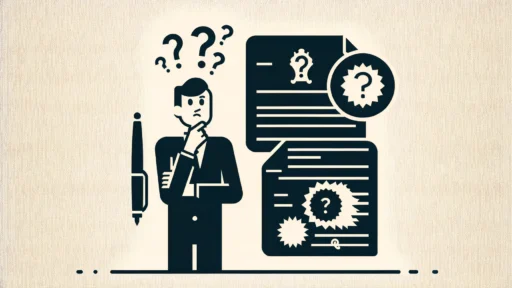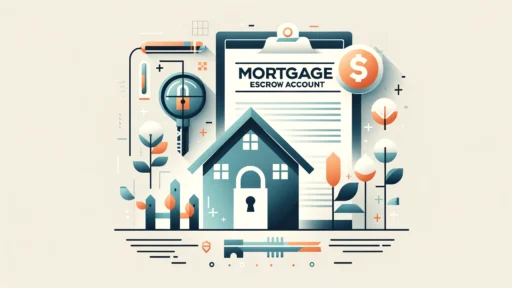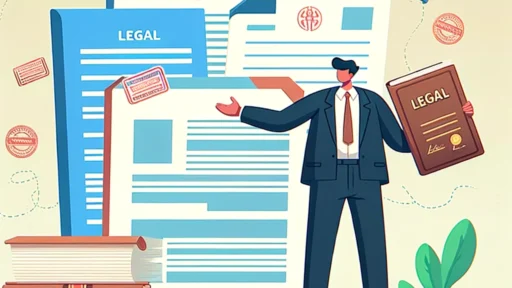If you have ever been in a situation where you literally swam in a pile of conduits, desperately in search of that single document you knew not where it hid, then you understand better the importance of having a good organization system that would allow you to classify your documents by type. In this tutorial, we will crack the nut of the different techniques and strategies of document categorization especially, and in addition, you will have the pleasure of getting valuable tips for improving your file management system. Get your tools ready, and let’s get the job done!
Categorizing by Type: A Comprehensive Guide
Do you have an idea of the categories that you can use to classify your documents? The major reason for such confusion in people is the difficulty in making the right choices according to their needs and requirements. Nevertheless, the mode of Darkness appears because we are there with a spark.
To classify documents in a meaningful way, there are a few methods that you might utilize. There is a group that feels that they should sort their papers alphabetically, while there are some who would want thematically arranged files. The most important thing to note is that the academic stuff should be qualitative; hence, the method should be chosen accordingly.
It is time to face the different ways you can classify the types of documents you have. The first of the many is a genre-based approach. This method, in brief, implies that people put their papers into separate collections based on what they are about. More specifically, however, this could be a collection of research papers, then one can list such categories as “biology,” “history,” and “literature.” This way of classification gives the person the opportunity to easily get information relevant to a specific subject.
Chronological Categorization and Organizing Your Documents Efficiently
Once you have your documents, the next step is to classify them into groups. A common way to do this is to sort them according to their content. This is called the subject-based approach. A person may find it helpful to put documents about a specific subject together. This method thus breaks the area of research and study into distinct pieces that can be individually well managed.
On the time factor, however, an alternative is chronological categorization. In this variant, documents are ordered by the time they were created or the time they were delivered. To clarify, you can create categories such as “2019”, “2020”, and “2021”. When you only need to find documents from a specific period of time, this can be a useful approach.
Do you understand which type of categories could be referred to, aren’t you? Let’s now get into more detail about the organization of your items. The heart of the matter here is to create a smart and intuitive system that enables you to locate what you need quickly and conveniently. Whether you opt for physical folders or digital folders, the point is to be consistent. In your mind, you should visualize these categories as traffic signs showing you the way to the gold mine that is your documents.
Simplifying Categorization: Tips for Efficient Document Organization
While sorting out your items, it is essential to take into account the number and range of the documents that you have. If there is a great volume of papers, it might be a good idea to go for broader categories and avoid getting overwhelmed. If you have a smaller number, you can use more detailed categories, though.
They are indeed words of wisdom: Keep it simple! At first blush, the task of building logical and coherent categories can look like a mission impossible, but don’t get discouraged; we have a couple of aces on our sleeve. The first thing is to make it as simple as possible. The too large quantity of categories can mix the cards, so it is better not to go over. In fact, just assign the wide-scope categories which include different documents.
Another factor to be considered is to take into account your future needs. It’s better to project the categories you will need in the upcoming months and years and make a plan according to that. To illustrate, you might be starting a new job or a new project, so think about the types of documents with which you will work and create categories that are relevant to your needs.
In the last place, you should also make sure that your categories are well labeled so you and others can easily locate what you are looking for. Place concise and descriptive labels that give proper and disciplined acknowledgment of each category’s contents. This will not only go easy on you but also save you from fatigue and time loss when searching for specific documents.

Demystifying the Proof of Residency Letter
What a proof of residency letter, one might ask. It’s a paper that keeps people awake at night, imbued with a lot of layers of the unknown and confusion. But fret not, kind friend, for we will open to you the truth behind this irreplaceable communication.
Never has the idea of the necessity of a proof of residency letter ever crossed your mind. Let’s take a look at how this marvel of paperwork fits into the bureaucracy and see the reason and significance of its existence.
The Purpose and Importance of a Proof of Residency Letter
Why is a proof of residency letter so crucial, though? This simple sheet of paper does a big job. It claims the address where its owner lives. Usually, this is the document required to be submitted when one is starting a bank account, applying for the government, or even for school admission. In brief, this is your certificate of living issued by the bureau.
Just visualize that there is no such thing as proof of residency letters. What a world would that be! Banks would not be able to ascertain your residency, public bodies would have a hard time deciding about giving you benefits, and educational institutions would never be sure which location you really are at. The proof of residency letter comes and puts everything in place and, of course, serves as a validation of your identity and address.
Key Elements to Include in a Proof of Residency Letter
After understanding why the proof of residency letter is very important and its purpose, now it’s important to see the finer parts of writing it; basically, there are some details that you cannot miss in your letter to be sure that it is an official document: your full name, your current address, the date, and your signature. The document should be your golden ticket, thus making it complete and faultless.
Let’s take a closer look at each of these elements:
- Your Full Name: That is the place where you can publicly say who you are. Make sure you have written it in a clear way; it may be your first name, nickname, or together, it doesn’t matter.
- Your Current Address: Here, we’re discussing that place called home that you identify with; let’s say, in the document, it is crucially expected that one provides the street name, the house number, apartment number (if any), city, state, and zip code. Besides, the person is required to make sure that there’s no wrong information that could probably mislead him/her.
- The Date: Just a date. Nonetheless, it plays the main role. Besides your signature on the letter, don’t forget to have your date included. The day, month, and year will positively create a timeline for living in a residence.
- Your Signature: This is the most subjective and independent mark of the source. The signature here means that the information stated in the letter is true, and the source is the best to be asked about that. Do the registration in the way you are comfortable with; it is very important to be consistent.
Sample Proof of Residency Letter Template
For many people, just thinking about composing a proof of residency letter causes them to shudder. No need for that! We have made the lives of those people who want to write letters by creating the sample template. Be the one to fill in the details, and there you are- your letter is ready! In the manner of your own particular cases, you are welcome to make the changes that are suitable.
Remember that the proof of residency letter is like gold that will help you to enjoy various opportunities and benefits. Be confident approaching the letter, as you know its aim and the main points that have to be included. So now, move ahead and rule the world of bureaucracy!
Proving Residency Made Easy: A Step-by-Step Guide
Now that everything is clear about the process of proof of residency letters, we can now pass over to the method of proving your residency step-by-step. Get ready, my dear; we are at the point where the real excitement begins!
Getting a document that verifies your residency is a basic necessity that ultimately may be a matter of a fine-tooth comb. People find themselves in a situation where they have to show proof of their address for various purposes. Two common legal purposes for which one may need to produce residency are applying for a driver’s license and voting, as well as personal reasons such as registering at a school or seeking governmental help. Understanding the process is vital to carry it out painlessly.
Step 1: Crafting a Convincing Proof of Residency Letter
Firstly, you have no choice but to prepare a proof of residency letter that is strong enough to convince anyone. This letter is the very first thing the organization or institution that has asked for your residency proof can see about you. Do you remember the main elements of the letter? Review each one as it is they that get you the desired outcome.
In the process of composing your letter, you need to make sure that you are clear in your purpose, short, and convincing. Include all the personal details of your name, address, and what the letter is being written for. Tell the recipient why establishing your residency is of the utmost importance and disclose any facts that will back up your claims. The way you write the letter is half the battle won when it comes to providing the evidence of your residence.
Step 2: Gathering Supporting Documents as Evidence
Making an affirmation of residency through a letter is already a very convincing thing to do, but you can make the case even stronger if you attach some supporting documents. Those papers are not only the physical evidence that solidifies your claim of residency but also credible witnesses that add to the strength of your arguments.
Include things like utility bills, bank statements, lease agreements, as well as any other official documents that have your name and address mentioned on them among the supporting documents you gather. These ones are your superheroes, just always by your side in the moment when there is any doubt or any skeptic appears on the horizon.
Step 3: Submitting Your Proof of Residency Documentation
Your letter and everything neat makes a great team while you are going through the final stage of becoming a resident of someplace. The way of submission can differ depending on the organization or institution seeking your residency proof.
If the submission of the documents is being made online, the instructions provided on the website or through the online portal are to be adhered to. Ensure that you have uploaded all necessary files and that they are clear and readable.
If one is submitting documents in person, he is to make a visit to the designated office or department and then give the letter and the included documents to the authorized personnel. Be ready to answer additional questions, if any, and supply any further documentation if required.
The key to success at this stage is achieving the highest possible level of detail. Make sure all necessary details are there and your documents are neat and eye-catching. Just recollect that the objective here isn’t to make the process smooth and efficient.
So here’s a whole guide to confirming your residency, dear reader. After being equipped with this new information, you are empowered to face the challenges. Remember that demonstrating your residency is not just a job but a chance to exhibit your loyalty and dedication. Therefore, take action, prove your residency, and open the door to a new world!








